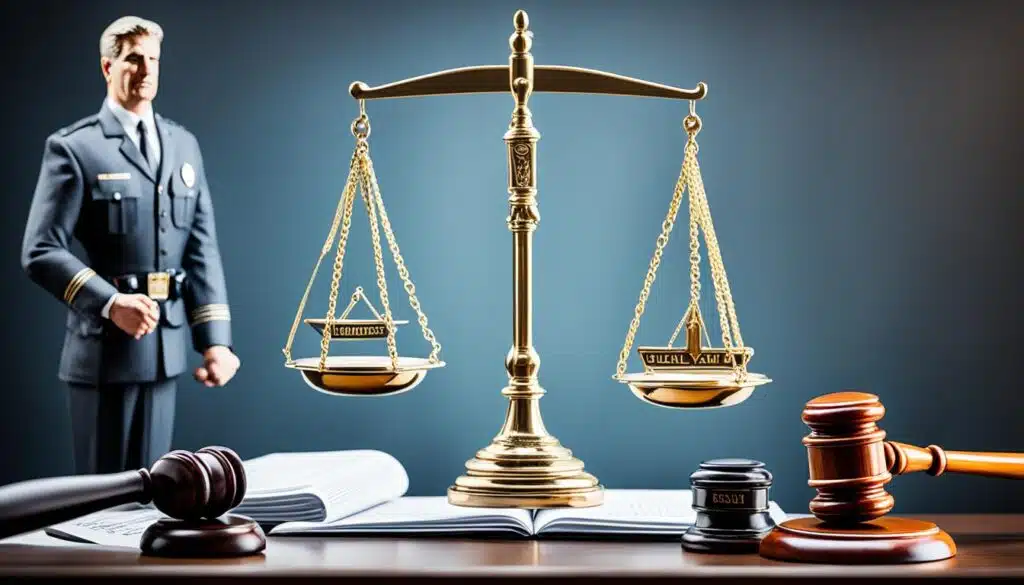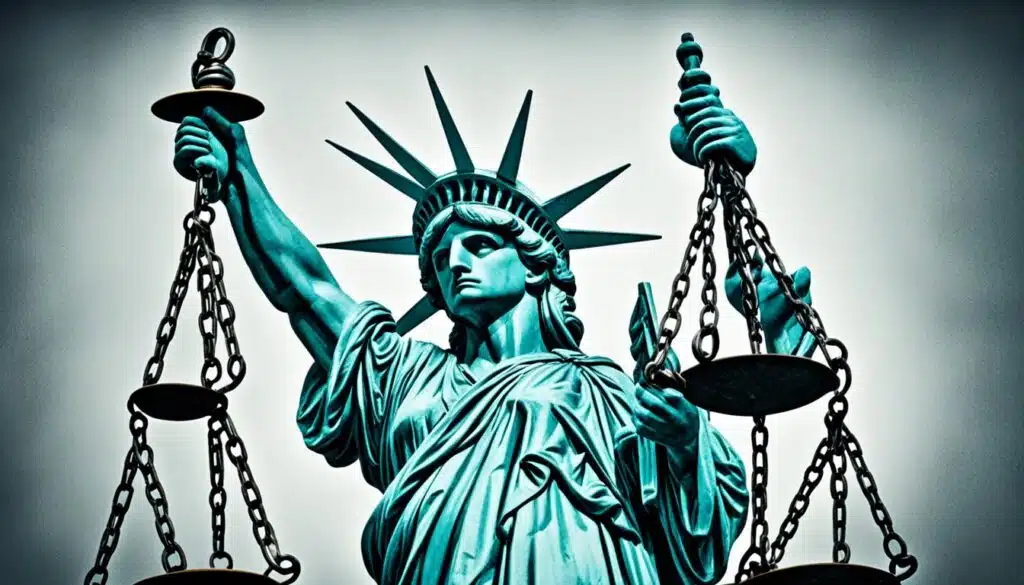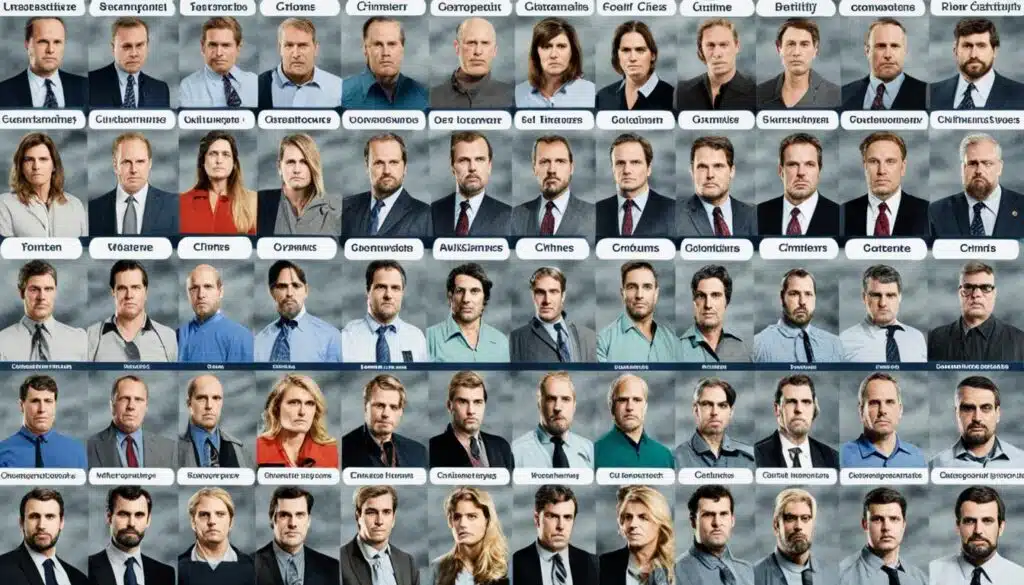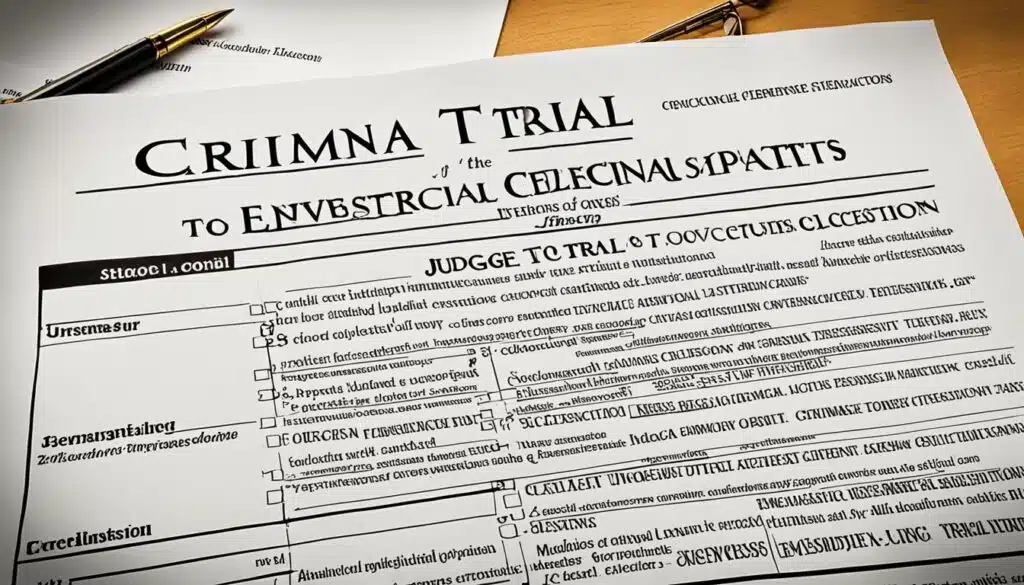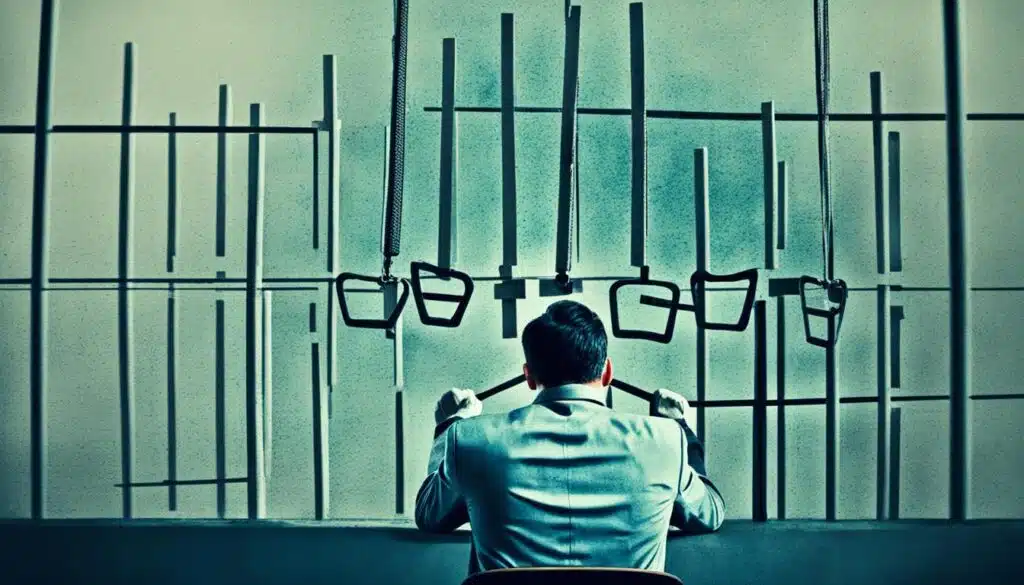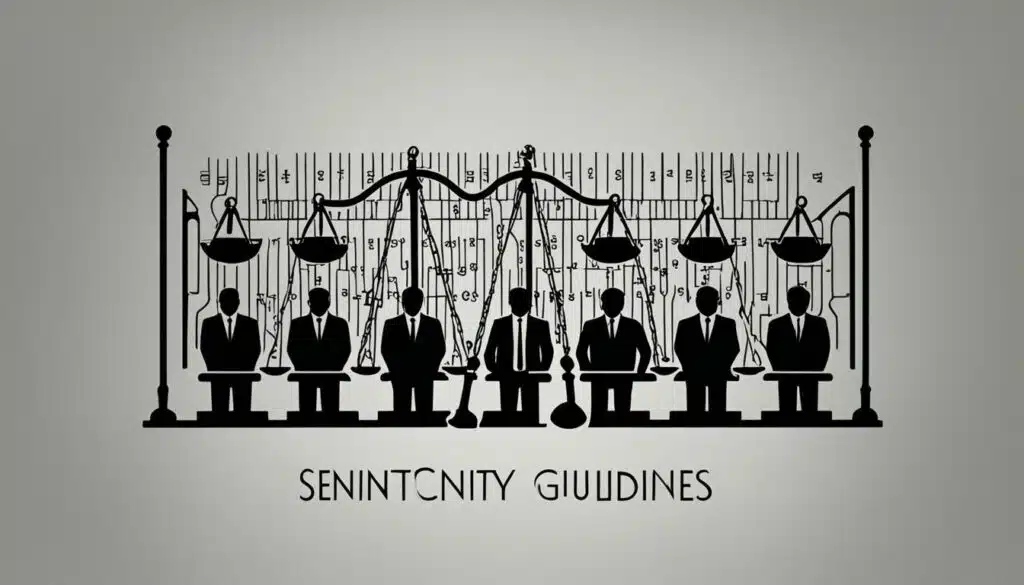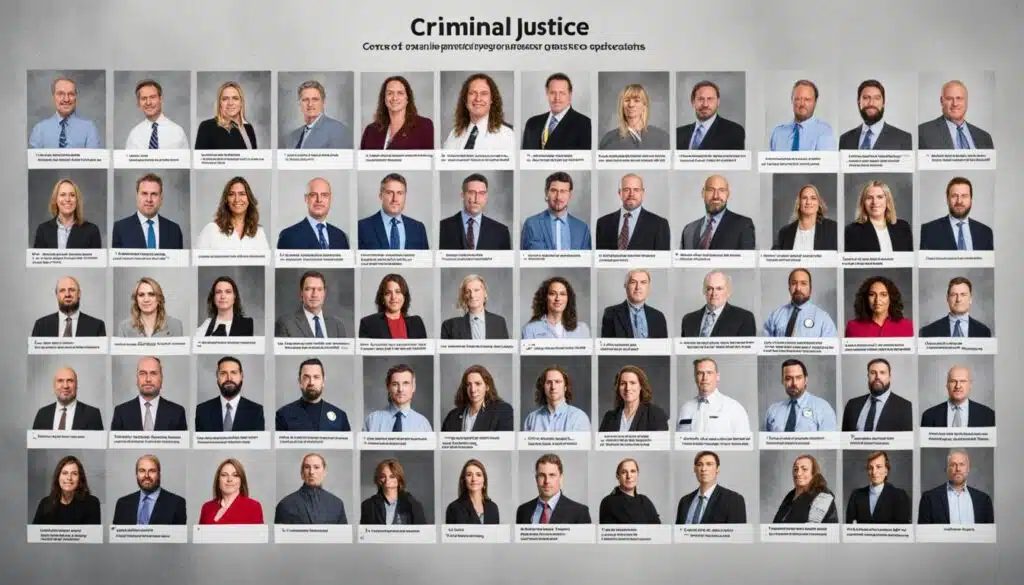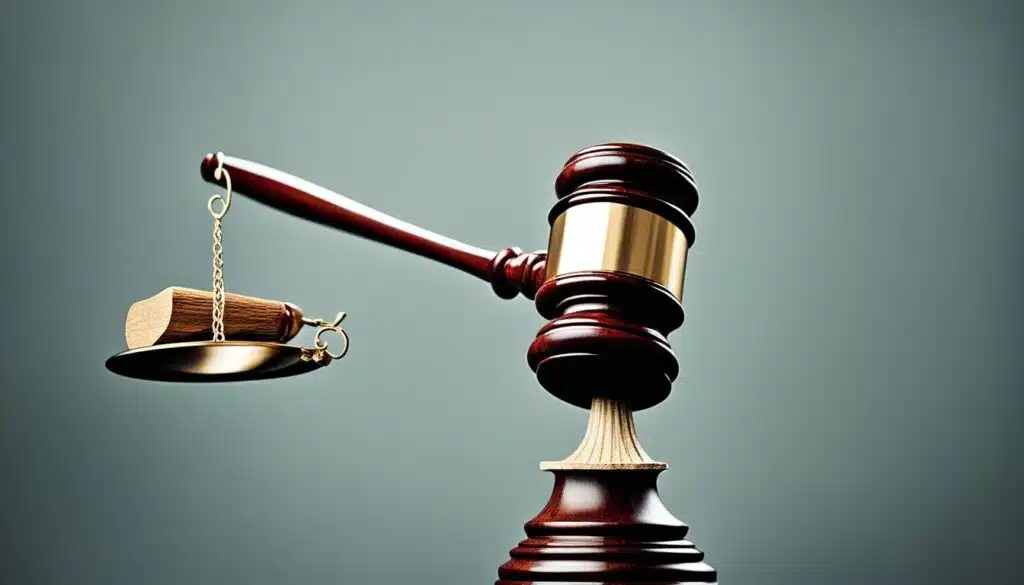Understanding Justice In Criminal Law : Criminal law is central to our legal system. It defines and punishes harmful acts. This is vital for protecting society and keeping justice alive.
At its heart, it seeks to protect us all. It does so by laying down ru2les on what behaviors are okay. In the United States, these laws are key to keeping peace and order all over the nation.
Key Takeaways
- Criminal law is essential for protecting the community and maintaining public safety.
- The U.S. legal system uses criminal laws to define and punish harmful actions.
- Justice and fairness are central to the principles of criminal law.
- Criminal law plays a vital role in preserving order and security nationwide.
- Understanding the key elements of criminal justice is crucial for navigating the legal system.
Also Read : Top Global PHD Scholarships
What is Criminal Law?
Criminal law is a key part of the legal system. It identifies and punishes actions that cause harm. The primary purpose of criminal law is to keep the community safe. It does this by making clear rules about what is and isn’t allowed. In the United States, criminal laws help keep order and security nationwide.
Definition and Purpose of Criminal Law
It’s a set of rules about what actions are crimes, how to punish those crimes, and how to tell who is guilty. The main goal of criminal law is to protect societal values, rights, and keep the community safe. The criminal justice system aims to stop crime, punish offenders, and help them change their ways. This is so that everyone in the community can live without fear.
Distinction from Civil Law
Criminal law and civil law do work differently. Criminal law deals with big wrongs that affect society, like murder or theft. It punishes with things like fines or jail. On the other hand, civil law manages issues between people or groups, like not honoring a contract or getting hurt. It often leads to paying money or fixing the problem. The criminal justice system focuses on criminal offenses. The civil justice system, however, takes care of private party disputes.
Also Read : Understanding The Legal Education System
Principles of Criminal Justice
The U.S. criminal justice system is built on protecting constitutional rights and seeking justice. It makes sure to both guard the rights of individuals and keep the public safe. It does this by bringing cohesion and discipline to society.
Constitutional Rights and Due Process
The criminal justice system centers on the basic constitutional rights of those charged. These rights ensure a just trial for everyone under the law. The right to counsel, a quick and open trial, and being judged by peers are critical. They protect the fairness of the criminal justice system.
Also Read : Essential MBA Scholarships For Future Education
Public Safety and Order
While valuing individual rights, the criminal justice system also keeps the public safe and society in order. Officers, prosecutors, and judges collaborate to enforce the law and handle criminal cases. They ensure that the trial and sentencing process is just. This balance between individual and public safety is essential.
Key Concepts in Criminal Law
In criminal law, two important ideas are mens rea and actus reus. They help decide if someone is guilty. This is key in how justice is carried out in the criminal justice system.
Also Read : Top MBA Scholarships For Business Students
Mens Rea: Criminal Intent
Mens rea stands for “guilty mind” in Latin. It’s about what someone was thinking or intending to do. According to the law, individuals must have meant to do the crime or acted in a way that showed they didn’t care about the consequences.
This stops people from getting in trouble for accidents. It makes sure only those who choose to do wrong on purpose are punished. Someone’s intention is what matters here.
Actus Reus: Criminal Act
The actus reus is the actual criminal act. It’s the physical part of committing a crime. This includes the visible actions or behavior that break the law.
So, if you commit a harmful crime on purpose, you’re responsible. Whether you meant to or not, your actions, if they cause harm, are held against you.
Both mens rea and actus reus are essential in criminal law. They help in measuring guilt and in court cases. These rules apply to all kinds of crimes, from serious felonies to smaller infractions.
Also Read : Top International PHD Scholarships
Categories of Crimes
In criminal law, crimes are divided into three main types. We have felonies, misdemeanors, and infractions. Each type is based on how serious the offense is. They come with different punishments and outcomes in the justice system.
Felonies
The most serious crimes fall under felonies. They cause significant harm to people or society. Examples are murder, robbery, and arson. These crimes can lead to long stays in state or federal prisons. They also include big fines and a lifelong criminal record.
Misdemeanors
Less serious than felonies, misdemeanors still impact individuals and society. They can be crimes like petty theft or minor drug possession. Punishments include up to a year in jail or fines. A conviction may lead to a criminal record affecting job and living situations.
Infractions
Infractions are the smallest offenses, known also as violations. They usually result in fines but no jail time. Things like traffic tickets or littering are considered infractions. While these don’t create a criminal record, they can affect your driver’s license or lead to fines.
| Category | Definition | Penalties |
|---|---|---|
| Felonies | Serious criminal offenses involving significant harm | Incarceration in state or federal prisons, fines, permanent criminal record |
| Misdemeanors | Less severe criminal offenses | Imprisonment in county or local jail, fines, criminal record |
| Infractions | Minor offenses without potential for incarceration | Fines, no criminal record |
Justice in Criminal Law
The criminal justice system works to ensure fairness in every case. It covers everything from arrest to the final court decision. This process is critical for maintaining a just society.
Criminal Procedure and Stages
Criminal cases follow a clear path with specific stages. They start with preliminary hearings and might include plea bargaining. Trials and sentencing are the final steps. At each stage, the system strives to follow rules like due process and innocent until proven guilty.
Rights of the Accused
Someone accused of a crime has legal protections. They include the right to a lawyer, a quick and open trial, and questioning their accusers in court. These rights are part of our Constitution. They are there to make sure the accused gets a fair trial.
Legal Defenses
The justice system allows for certain defense strategies. These include self-defense, pleading insanity, and being forced to do something. Using these defenses well can lead to a not guilty verdict or a lesser punishment. As the law evolves, efforts are ongoing to make sure all trials are fair, even in complex or famous cases.
Goals of Criminal Punishment
In the United States, the criminal justice system aims for more than just retribution. It includes retribution but also focuses on rehabilitation. It tries to keep people out of trouble by acting as a deterrent against committing crimes.
Retribution
Retribution in the law means matching the punishment to the crime. It’s seen as a fair way to hold wrongdoers accountable. It also helps keep the peace and makes sure everyone follows the rules.
Rehabilitation
The system also works on rehabilitation. It tries to fix what made the person break the law. This could be mental health, drug problems, or not having enough education or job skills.
Offering therapy, job training, and other programs, the system hopes to help former offenders get back on track. The goal is to prevent them from falling back into crime. They want them to join society as good citizens again.
Deterrence
Criminal punishment serves as a deterrent as well. It tries to scare potential lawbreakers from committing offenses. Through fines, probation, or imprisonment, the system tries to make people think twice about breaking the law.
By doing this, it hopes to prevent crime and protect the public from harm.
The many aims of criminal punishment show just how complex the system is. As we keep trying to improve the justice system, we need to find the right balance. This balance ensures fairness and helps everyone – including those who did wrong and the community at large.
Sentencing Guidelines
Judges have a key role in setting sentences for people who break the law. They look at both mitigating factors and aggravating factors when making decisions. This helps keep the system fair and just, while focusing on helping offenders change, preventing crime, and keeping the public safe.
Some things can make a sentence less severe. For example, not having a criminal record or showing you’re sorry could help. Also, personal difficulties that led to the crime might be taken into account. These factors can influence whether a person receives a smaller fine, a chance on probation, or a less severe prison sentence.
However, using a weapon or targeting those who are weak might increase the seriousness of a sentence. So could a past of violence or multiple crimes. In such situations, penalties might be tougher, even including the death penalty in some places.
It’s important that judges carefully weigh these factors when deciding how to sentence someone. By doing so, they balance fairness with the need to discourage crime and protect society. This approach supports the goals of the legal system, helping offenders find a better path while making sure the community remains safe.
| Mitigating Factors | Aggravating Factors |
|---|---|
| Lack of prior criminal record | Use of a weapon |
| Evidence of remorse | Targeting vulnerable victims |
| Personal hardships or circumstances | History of violent or repeat offenses |
| Cooperation with law enforcement | Premeditation or planning |
| Exceptional character or community service | Abuse of position of trust or authority |
Judges need to think over these positive and negative points carefully. This ensures that the punishment fits the crime, is fair, and meets the aims of the justice system. These aims include helping offenders get back on their feet, preventing future crimes, and protecting the public.
Role of Key Participants
The criminal justice system needs many key players to operate well. Each person has a clear job to do. This includes judges, prosecutors, and defense attorneys. , They all work together to make sure the system is fair and works smoothly.
Judges are vital, leading trials and making sentencing decisions. They must understand the law deeply. Their job is to make fair and unbiased decisions, protecting the rights of everyone involved.
This includes thinking about the evidence very carefully. They also look out for the rights of the accused. Then, they give fair decisions and sentences.
Prosecutors present the government’s side in court. They start by figuring out what crimes might have happened. Then, they decide which charges to bring. In court, prosecutors present the case against the accused. They make sure justice is done while also keeping the public safe.
Defense attorneys stand up for the accused’s rights. They make sure their clients get a just trial. They challenge evidence the prosecutors bring. Defense attorneys also fight for fair sentencing or look for other options like plea deals. They play a key part in making sure everyone’s rights are respected in the system.
All these people and their different jobs are really important. They work together to make the criminal justice system work as it should. As we make changes to the justice system, we need to keep improving its fairness and making it better for everyone.
Also Read : Understanding Your Legal Rights And Protections
Conclusion
Criminal law is vital in the U.S. legal system. It defines and punishes harmful actions. This process aims to protect the community and ensure justice. It’s crucial for everyone to understand the principles of our legal system. These include protecting rights and keeping the public safe.
We’ve looked into how criminal justice works. We found a balance between individual rights and society’s safety. The goals of punishing criminals include making them pay for their acts and helping them change. We also saw the role of guidelines and what influences judges’ choices.
Looking forward, change in the criminal justice system will keep happening. This change comes from new technologies and our evolving views. The system must adjust to these shifts. It aims to continue being fair, just, and protective of everyone’s rights.
By learning about criminal law, we aim for a better system. One that is fair, clear, and efficient. This kind of system protects the accused but also takes care of all citizens.
The criminal justice system keeps changing, needing us to watch closely for real justice. While the basics of criminal law stay the same, how we use them changes. This is because our values, tech, and needs are always shifting. These factors affect how we get justice within the system.
The criminal justice system faces a big challenge today. It must keep people safe while also protecting their constitutional rights. With crimes getting more complicated, lawmakers and experts have a tough job. They must make sure the rules are fair and also keep up with new types of crimes.
Debates and changes continue about how we punish criminals. The talks focus on what’s more important: retribution, rehabilitation, or stopping new crimes (deterrence). Judges, lawyers, and prosecutors are key in this. They work to ensure the justice served is just and makes a difference. So, the criminal justice system has to keep improving. It must meet the changing needs of our society while sticking to its core mission of seeking justice.
FAQs
What is the definition and purpose of criminal law?
Criminal law is a vital part of the legal system. It defines and punishes harmful actions. The goal of criminal law is to keep the community safe. It does this by setting boundaries on what society finds acceptable. In the United States, these laws are key to maintaining order and security nationwide.
How does criminal law differ from civil law?
The big difference between criminal and civil law is in what they cover. Criminal law deals with acts seen as harmful to society as a whole. In contrast, civil law handles disagreements between people or organizations. Criminal law is about public safety and enforcing values. Civil law, however, focuses on private rights and solving disputes.
What are the fundamental principles underlying the U.S. criminal justice system?
The U.S. criminal justice system is built on protecting rights and seeking justice. It’s crafted to make sure individuals are treated fairly. This includes the right to a lawyer and being seen as innocent until proven guilty. It also works to keep everyone’s safety and keep society peaceful.
What are the key concepts of “mens rea” and “actus reus” in criminal law?
In criminal law, there are two key ideas: “mens rea” and “actus reus.” Mens rea means the intent or state of mind of the person committing the crime. Criminal acts must be done on purpose or with recklessness to be a crime. Actus reus, however, is about the criminal action itself.
What are the major categories of crimes in the U.S. criminal justice system?
Three main categories of crimes exist in the U.S.: felonies, misdemeanors, and infractions. Felonies are the most serious, punishable by prison or death. Misdemeanors are less severe and might lead to fines or short jail time. Infractions are minor offenses, usually just fined.
What are the key stages of the criminal justice process?
The criminal justice process works to be fair and just. It involves steps from arrest to sentencing. Many people have essential roles, like police, lawyers, and judges. They all play a part in making sure the process is thorough and fair.
What are the primary goals of criminal punishment?
More than just paying for what someone has done, punishment goals include rehabilitation and preventing more crimes. Judges look at both good and bad things the criminal has done in deciding a punishment.
What are the key factors that judges consider when sentencing offenders?
When handing out a sentence, judges think about many things. They look at the person’s situation and history, as well as how serious the crime was. They weigh both sides to decide on a fair penalty.
What are the distinct roles of the key participants in the criminal justice system?
The criminal justice system relies heavily on different people to work well. Judges make sure the law is followed and give out fair punishments. Prosecutors bring charges and show evidence, while defense attorneys protect the rights of the accused.

